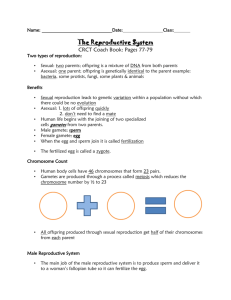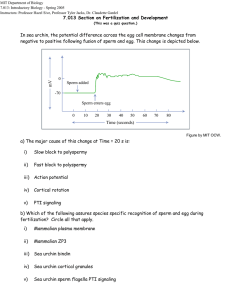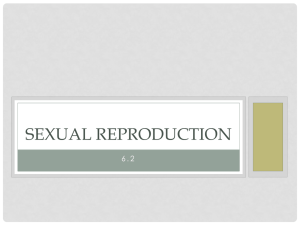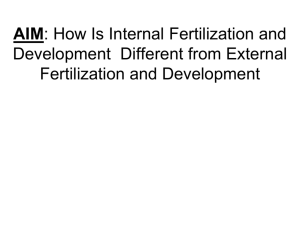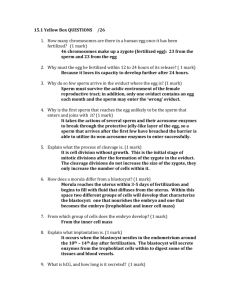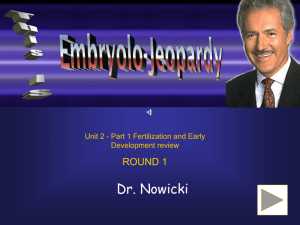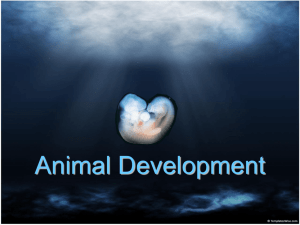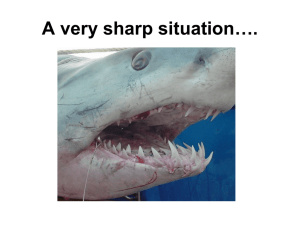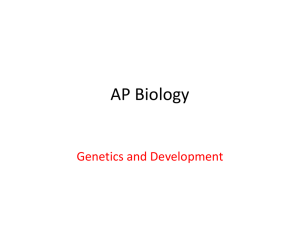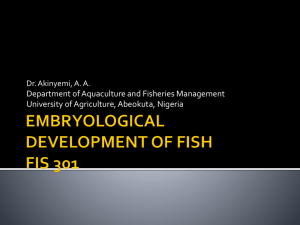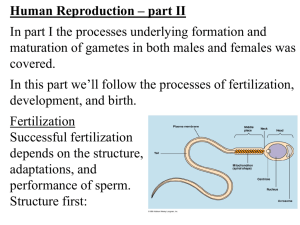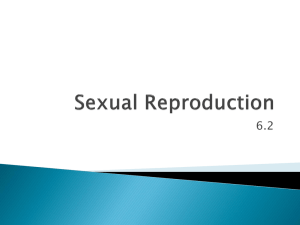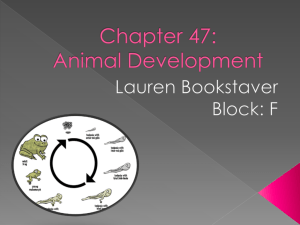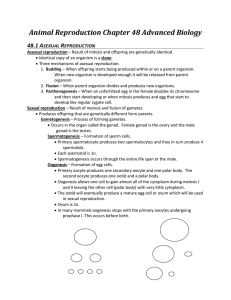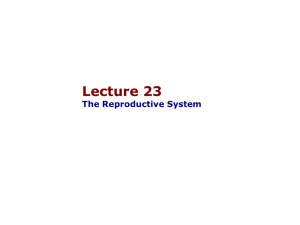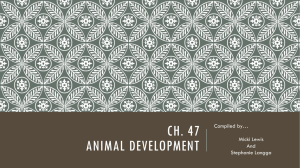Fertilization I Fertilization – the fusion ( union or joining) of sperm
advertisement
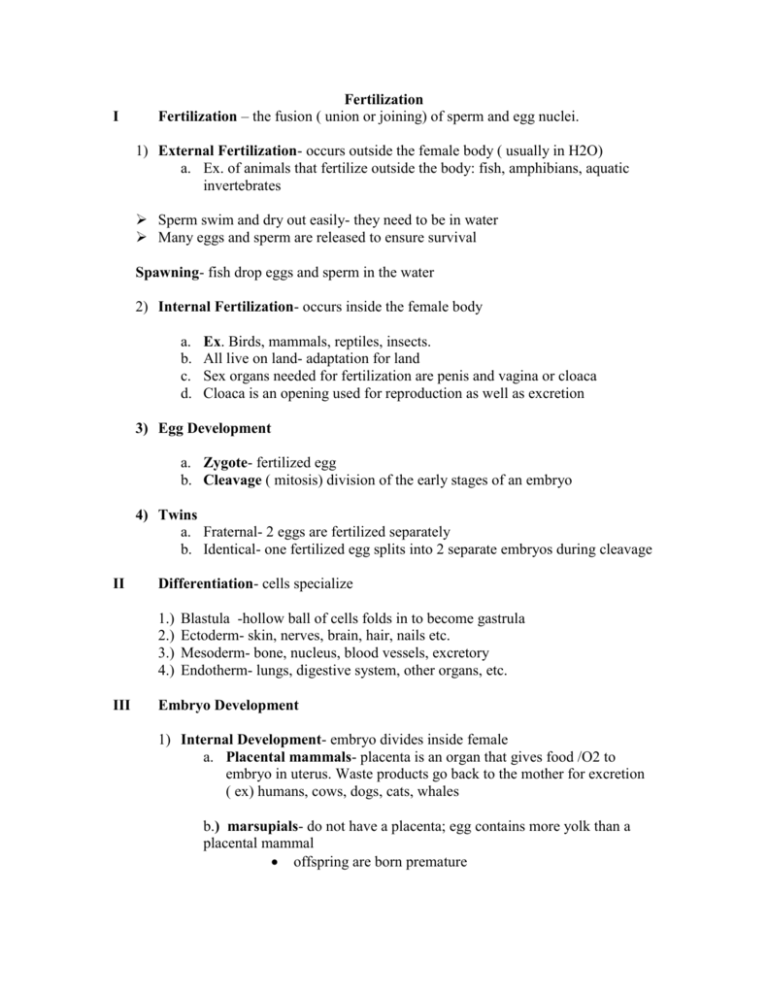
I Fertilization Fertilization – the fusion ( union or joining) of sperm and egg nuclei. 1) External Fertilization- occurs outside the female body ( usually in H2O) a. Ex. of animals that fertilize outside the body: fish, amphibians, aquatic invertebrates Sperm swim and dry out easily- they need to be in water Many eggs and sperm are released to ensure survival Spawning- fish drop eggs and sperm in the water 2) Internal Fertilization- occurs inside the female body a. b. c. d. Ex. Birds, mammals, reptiles, insects. All live on land- adaptation for land Sex organs needed for fertilization are penis and vagina or cloaca Cloaca is an opening used for reproduction as well as excretion 3) Egg Development a. Zygote- fertilized egg b. Cleavage ( mitosis) division of the early stages of an embryo 4) Twins a. Fraternal- 2 eggs are fertilized separately b. Identical- one fertilized egg splits into 2 separate embryos during cleavage II Differentiation- cells specialize 1.) 2.) 3.) 4.) III Blastula -hollow ball of cells folds in to become gastrula Ectoderm- skin, nerves, brain, hair, nails etc. Mesoderm- bone, nucleus, blood vessels, excretory Endotherm- lungs, digestive system, other organs, etc. Embryo Development 1) Internal Development- embryo divides inside female a. Placental mammals- placenta is an organ that gives food /O2 to embryo in uterus. Waste products go back to the mother for excretion ( ex) humans, cows, dogs, cats, whales b.) marsupials- do not have a placenta; egg contains more yolk than a placental mammal offspring are born premature they climb out of the mother’s vagina, up to the pouch where they nurse on milk and develop no umbilical cord, no placenta 2) External Development a) Development in an egg outside the body (ex) fish, birds, reptiles, amphibians, insects, monotremes ( mammals) (ex) platypus, echidna b) Land animals have a shell on egg so that they don’t dehydrate ( dry out) *** See Venn Diagram on Internal and External Fertilization *** See Amniotic Egg Diagram






